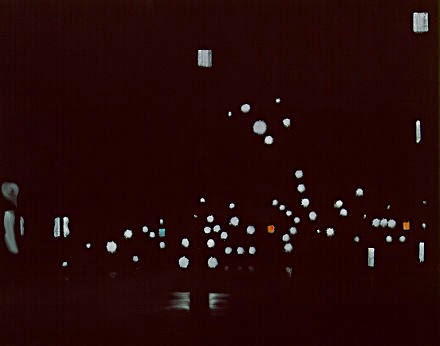 |
| Planks a lot. |
From the moment I began making woodcuts in the late minter of 2002, I've had a hard time explaining what
exactly a woodcut is. I usually end up comparing it to a rubber stamp. It is the same principal -- relief printing. But then, so is a finger print, but it would be wrong, I think, to consider every perp at the police station a "printmaker."
Sorry: "alleged" perp.
I've mentioned before that my first prints were made with a potato and some glitter paint. However, my first authentic woodcut was made with a plank of pine I had from a brief flirtation with carpentry. It was a print of my wife; as per usual, I thought it was lovely, she thought it was hideous. We are still married.
Very quickly, I discovered poplar. I don't know how I came to discover poplar -- maybe Internet research, maybe a book. I loved how sturdy it was. My first piece was 12"x12"x1/2", and my first print off of poplar was a very large Valentine's Day card for my critic...er, wife. This time, she loved it. That's not why I stuck with poplar, of course. Pine was easy to cut, but it was very splintery. And a little thirsty for the water-based inks I used at the time.
With the poplar, I switched to oil-based inks, and the combination was great. For reasons lost to me now, I switched from poplar to birch plywood. I think the deciding factor was a combination of crappy dull tools/idiot who couldn't figure out how to sharpen his tools. More the latter than the former. Birch plywood was great for me -- I could do almost all of my carving with an Xacto.
 |
| Why Ply? |
I used 1/4" plywood, which meant that warping was a constant issue. Also, the wood was prone to very unfortunate splintering. I was also too often finding big knotholes in the sublayer, which ended up ruining a number of prints. A lot of printmakers swear by their plywoods, and I can see why. A lot also love their poplar. I went back to poplar a couple of years ago -- after learning how to sharpen my tools, of course.
I'm a believer in sustainable resources, when they work (I tried -- I really TRIED -- to use
a greener solvent for cleanup. It was awful. Sorry, Earth). And I do feel guilty carving up a plank of poplar for my prints, when linoleum is readily available.
 |
| This IS your father's linoleum. |
Oh, didn't you know linoleum is a green resource? Yeah, it's kind of crazy -- I always thought it was rubber or plastic, but it's linseed oil and sawdust. Probably poplar sawdust. And I love the look of linocuts -- the lines are so clean, and the impressions are so even. I may do a little linoleum this summer. But it will take a lot to get me to change my mind about poplar. I love how it works. I love that it's sturdy, and can hold up to the many carvings and prints that reduction printing imposes.
 |
Linoleum done right: William Hays, "Quiet Night."
|
There are so many options for printmakers. I knew a guy who would find old cabinet doors in the trash and use them for woodcuts. I've made collagraphs with cut out styrofoam. The art of art is never locking yourself into one medium, one subject, one idea.
The print at left is a reduction linocut by artist William Hays. He is my printmaking hero. Check out his amazing work at: http://www.artfulhome.com/artist/William-Hays/8352
 "Camp", 1990, shown here, stole the show for me. They only needed to hang this one up. As I recall, it was the first print one saw when entering the exhibition hall (and I mean hall; one of the things that drives me nuts is that works on paper are often relegated to this little underground hallway, which is clean and well lit, but I get the feeling that, unless you know to look for it, you'll walk on by).
"Camp", 1990, shown here, stole the show for me. They only needed to hang this one up. As I recall, it was the first print one saw when entering the exhibition hall (and I mean hall; one of the things that drives me nuts is that works on paper are often relegated to this little underground hallway, which is clean and well lit, but I get the feeling that, unless you know to look for it, you'll walk on by).

















